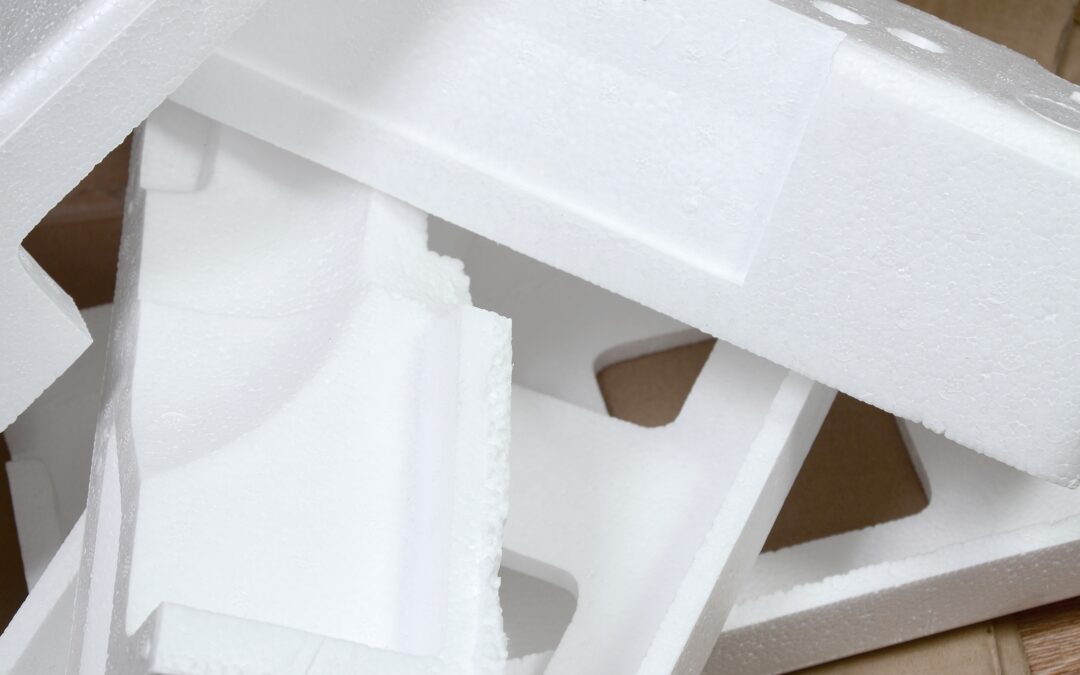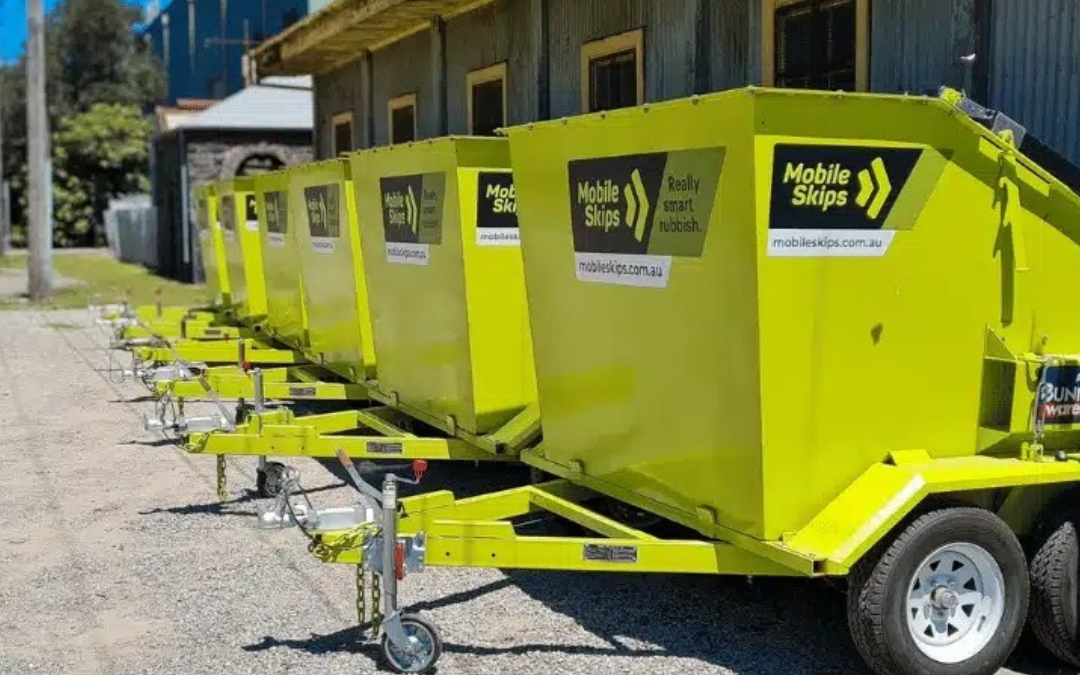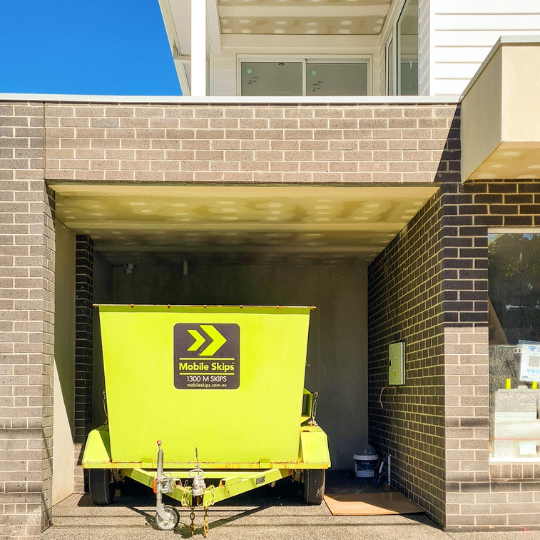Efficient DIY Waste Removal
Tackling DIY projects? Don’t forget about waste removal. Keeping your space clean isn’t just about aesthetics; it’s about doing your bit for the planet too. Here’s how to handle your DIY waste like a pro with these DIY waste removal best practices.
Why Proper Waste Disposal Matters
Getting rid of waste the right way keeps our environment clean and safe. Mess it up, and you could be looking at pollution and health problems. For instance, dumping hazardous stuff can mess up soil and water.
When you chuck waste properly, you’re also helping to save resources. Metals, plastics, and glass can be recycled and reused, cutting down the need for new materials. This not only saves resources but also slashes the carbon footprint from making new stuff.
Plus, sticking to proper waste disposal keeps you on the right side of the law. Many places have strict rules about waste management to protect public health and the environment. Follow these rules, and you’ll dodge fines and legal headaches. For more on this, check out diy waste removal regulations.
Go Green with Waste Management
Want to make your DIY projects greener? Here’s how:
- Reduce: Plan your projects to cut down on waste. Buy only what you need and skip the extra packaging.
- Reuse: Before you toss something, think if it can be used again. Leftover wood? Perfect for small crafts or repairs.
- Recycle: Separate your waste into what can be recycled and what can’t. Paper, cardboard, metals, and some plastics usually make the cut. For more on recycling, visit recycling options for diy waste.
Waste Reduction Table
| Waste Management Practice | Description |
|---|---|
| Reduce | Plan projects to minimize waste generation. |
| Reuse | Repurpose materials for other projects. |
| Recycle | Sort and recycle eligible materials. |
For bigger projects, consider using mobile skips solutions. They’re handy and eco-friendly, making waste disposal a snap.
By adopting these green practices, you can seriously cut down the environmental impact of your DIY projects. For more tips, check out our articles on diy waste removal best practices and diy waste removal guidelines.
Proper waste disposal and sustainable waste management are key to any DIY project. They keep your workspace clean, safe, and eco-friendly. So, next time you dive into a DIY project, remember these tips to handle your waste efficiently.
Waste Segregation Techniques
Sorting your trash right where it starts is a game-changer for managing waste and cutting down on its environmental footprint. Let’s break it down.
Why Bother Sorting Waste?
Sorting waste at the source means separating different types of trash right where it’s made—like at home, work, or in factories. This means pulling out recyclables like paper, plastic, glass, and metal from the rest of the junk, like food scraps and hazardous stuff.
Here’s why it’s worth the effort:
- Less Mess: When you sort your recyclables properly, they stay clean and ready to be recycled. Dirty recyclables are a pain to clean up and often just end up in the dump.
- Better Recycling: Properly sorted waste gets recycled more efficiently, saving resources and cutting down on pollution.
- Save Resources: By recycling, we reuse materials and cut down on the need for new raw stuff.
| Waste Type | Examples | Disposal Method |
|---|---|---|
| Recyclable | Paper, Plastics, Glass, Metals | Recycling Bins |
| Organic | Food Scraps, Yard Waste | Composting or Green Waste Bin |
| Hazardous | Batteries, Paint, Chemicals | Special Collection Facilities |
| Non-Recyclable | Styrofoam, Certain Plastics, Contaminated Items | Landfill or Incineration |
How to Sort Your Trash Like a Pro
Sorting trash doesn’t have to be a headache. Here are some easy tips:
- Label Everything: Slap some labels on your bins so everyone knows what goes where. No more guessing games.
- Separate Containers: Use different bins for recyclables, compostables, and hazardous stuff. Makes life easier.
- Teach the Crew: Make sure everyone at home knows the drill. A little education goes a long way.
- Set Up a Sorting Spot: Create a dedicated area for sorting waste. Keeps things neat and tidy.
- Know the Rules: Stay updated on local waste rules to make sure you’re doing it right. Check out our page on diy waste removal regulations for more info.
By following these tips, you’ll be a waste-sorting wizard in no time. Plus, you’ll be doing your bit for the planet. For more handy tips on dealing with trash from home projects, take a look at our guide on home renovation debris removal.
Safe Waste Handling
When you’re tackling home DIY waste removal, keeping yourself safe should be your top priority. Let’s break it down into two main parts: Personal Protective Equipment (PPE) and safe lifting techniques.
Personal Protective Equipment (PPE)
Wearing the right gear is a no-brainer when it comes to handling waste. It keeps you from getting hurt or sick (United Hoist). Make sure your PPE fits well, feels comfy, and does its job. Here’s what you need:
- Gloves: Keep your hands safe from sharp stuff and nasty chemicals.
- Safety Glasses: Protect your eyes from flying debris and dust.
- Hard Hat: Shields your noggin from falling objects.
- Dust Mask/Respirator: Stops you from breathing in harmful dust and fumes.
- Steel-Toed Boots: Guard your feet against heavy things.
- High-Visibility Vest: Makes sure people can see you, especially when it’s dark.
| PPE Item | What It Protects You From |
|---|---|
| Gloves | Sharp objects and chemicals |
| Safety Glasses | Debris and dust |
| Hard Hat | Falling objects |
| Dust Mask/Respirator | Harmful dust and fumes |
| Steel-Toed Boots | Heavy objects |
| High-Visibility Vest | Low-light conditions |
Stick to these guidelines to keep yourself safe while getting rid of waste. For more detailed info, check out diy waste removal safety precautions.
Safe Lifting Techniques
Lifting stuff the right way is key to avoiding injuries (United Hoist). Here are some tips to keep in mind:
- Assess the Load: Decide if you can handle it alone or need a buddy.
- Bend Your Knees: Lift with your legs, not your back.
- Keep the Load Close: Hold it close to your body to stay balanced.
- Avoid Twisting: Turn with your feet, not your waist.
- Lift Smoothly: No sudden jerks—lift in one smooth motion.
| Step | What to Do |
|---|---|
| Assess the Load | Figure out if you need help |
| Bend Your Knees | Use your legs to lift |
| Keep the Load Close | Hold it close to stay balanced |
| Avoid Twisting | Turn with your feet to avoid back injury |
| Lift Smoothly | Lift in a smooth, controlled motion |
Following these tips can help you avoid the usual injuries that come with lifting heavy stuff. For more advice, check out our article on diy waste removal guidelines.
By sticking to these best practices, you can make your home DIY waste removal safer and more efficient. For more tips and tricks, take a look at our articles on diy waste removal tips and diy waste removal equipment.
Smart Construction Waste Disposal
Renovation and construction projects can churn out a mountain of waste. Managing this mess responsibly is key to keeping our planet happy and staying on the right side of the law. Here’s how to handle builder’s waste like a pro.
Tips for Handling Builder’s Waste
Keeping your worksite clean and safe starts with smart waste management. Here’s how to do it right:
- Sort It Out: Separate wood, metal, concrete, and plastics right at the source. Makes recycling a breeze.
- Use the Right Bins: Different bins for different stuff. Keeps things tidy and makes recycling simpler.
- Lift Smart: Don’t break your back. Lift with your legs and use tools when needed (United Hoist).
- Suit Up: Always wear gloves, goggles, and helmets to stay safe.
- Plan Ahead: Have a waste management plan before you start. Know how you’ll handle, store, and get rid of different types of waste.
| Waste Type | How to Dispose |
|---|---|
| Wood | Recycle or use as mulch |
| Metal | Take to a scrap metal yard |
| Concrete | Crush and reuse as aggregate |
| Plastics | Sort and recycle |
Need more tips? Check out our home renovation debris removal guide.
Eco-Friendly Disposal Methods
Going green with your waste disposal not only helps the planet but also keeps you in line with local rules. Here’s how to do it:
- Recycle: Many materials like metals, concrete, wood, and some plastics can be recycled (EPA). For more info, see our recycling options for DIY waste.
- Reuse: Use materials again if you can. Crushed concrete can be new aggregate, and wood can be repurposed.
- Think Ahead: Design projects so they can be taken apart easily later. Makes recycling easier (EPA).
- Donate: Got extra materials in good shape? Donate them to local charities or community projects.
- Call the Pros: Sometimes, it’s best to hire professional waste removal services. They know how to handle and recycle waste properly. For more details, see our article on diy waste removal professional services.
By following these tips, you can manage your construction waste responsibly and sustainably. This not only helps the environment but also keeps your project compliant with local regulations. For more detailed guidelines, check out our comprehensive DIY waste removal guidelines.
Mobile Skips Solutions
Features and Benefits
Mobile skips make home DIY waste removal a breeze, especially for new homeowners in Australia. Here’s why they’re a hit:
- No Council Permit Needed: Mobile skips are on a registered trailer, so you can park them anywhere a car fits. No council permit needed, saving you time and hassle.
- Eco-Friendly Partnership: Every time you book a rubbish collection online, Mobile Skips teams up with Carbon Neutral to plant a tree at no extra cost. It’s a win for you and the planet.
- Fixed-Price Upfront: No hidden fees here. Mobile Skips offers a clear, fixed price. Know what you’re paying for, with easy changes and free returns if plans change (Mobile Skips).
- Perfect Size for DIY Projects: With a volume of 4 cubic meters, these skips are ideal for home and garden clean-ups, office tidying, or small projects. They handle most types of waste, just keep it safe—no poisons or explosives (Mobile Skips).
- Fast Delivery: Need it now? Mobile Skips promises 3-hour same-day delivery right to your door. No more waiting around (Mobile Skips).
| Feature | Benefit |
|---|---|
| No Council Permit | Save time and hassle |
| Eco-Friendly Partnership | Reduce carbon footprint |
| Fixed-Price Upfront | No hidden fees |
| Perfect Size | Great for various DIY projects |
| Fast Delivery | 3-hour same-day service |
Eco-Friendly Waste Removal
Mobile skips aren’t just convenient; they’re also green. Here’s how they stand out:
- Tree Planting Initiative: As mentioned, Mobile Skips partners with Carbon Neutral to plant a tree for every online booking. This helps offset carbon emissions and supports reforestation (Mobile Skips).
- Recyclable Materials: Waste collected in mobile skips is sorted to separate recyclables from non-recyclables. This reduces landfill waste and promotes sustainable waste management. For more on recycling, check out our guide on recycling options for DIY waste.
- User-Friendly Waste Sorting: Mobile Skips makes sorting your waste easy, which is crucial for effective recycling and reducing environmental impact. Proper waste segregation is key for responsible disposal. Learn more in our section on waste segregation techniques.
Choosing mobile skips means hassle-free waste removal and a nod to environmental sustainability. For more tips and best practices on DIY waste removal, visit our section on DIY waste removal best practices.
Environmental Impact of Waste Disposal
Hazards of Improper Disposal
Tossing waste the wrong way can wreak havoc on our environment. We’re talking about messing up habitats, polluting air, water, and soil. If chemicals aren’t disposed of properly, they can sneak into our drinking water and oceans, harming wildlife and even us humans. Waste from our daily lives can lead to algae blooms in the ocean, which produce toxins that kill marine life and make people sick.
| Environmental Impact | Description |
|---|---|
| Water Contamination | Chemicals and waste can seep into water bodies, messing up drinking water and marine life. |
| Soil Degradation | Hazardous waste can ruin soil quality, affecting plant growth and soil critters. |
| Air Pollution | Burning waste or improper disposal can release toxic gases, messing up the air we breathe. |
| Habitat Destruction | Piles of waste can destroy natural habitats, leading to a loss of biodiversity. |
Economic and Environmental Consequences
Businesses that don’t recycle or dispose of waste properly can overload waste management systems. About 25% of stuff in recycling centers isn’t recyclable, leading to economic losses and environmental contamination. Improper disposal can also put waste management and sewer workers at risk when they come across harmful materials.
| Consequence | Impact |
|---|---|
| Economic Loss | Bad recycling and disposal practices lead to financial losses and higher costs. |
| Infrastructure Strain | Overloaded waste management systems struggle with improperly disposed waste. |
| Health Risks | Hazardous materials can harm waste management workers and the public. |
| Reputation Damage | Breaking environmental laws can hurt a company’s reputation and profits. |
Following environmental, safety, and health regulations might seem like a hassle, but not doing so can be even more expensive. Experts can help businesses save thousands by managing compliance. Many companies are finding ways to cut costs and get ahead by going beyond just following the rules.
For homeowners, knowing how to properly dispose of renovation waste is key. By following DIY waste removal best practices, you can help keep the environment healthy and avoid the problems of bad waste management. Check out DIY waste removal guidelines to make sure your home projects are both efficient and eco-friendly.
Recycling Strategies
Recycling is a big deal when it comes to home DIY waste removal. Knowing the different ways to recycle can help you get the most out of your renovation leftovers. Let’s break down upcycling, downcycling, and closed-loop recycling.
Upcycling vs. Downcycling
Upcycling and downcycling are like two sides of the recycling coin. Each has its perks and downsides.
Upcycling: This is where you take waste and turn it into something better than it was before. Think of it as giving trash a glow-up. Upcycling cuts down on the need for new materials, boosts local economies, and creates jobs by encouraging small-scale and artisanal production (CleanRobotics). A classic example? Turning old wooden pallets into chic furniture.
Downcycling: On the flip side, downcycling turns materials into products of lesser quality. It keeps stuff out of the landfill for a bit longer, but it’s not a forever fix. Eventually, the material loses its value (CleanRobotics). Think of recycling plastic bottles into lower-grade plastic items that will eventually end up as waste.
| Recycling Type | Description | Example | Quality of New Product |
|---|---|---|---|
| Upcycling | Turns waste into better products | Wooden pallets into furniture | Higher |
| Downcycling | Turns materials into lesser products | Plastic bottles into lower-grade plastic | Lower |
For more tips and ideas on upcycling your renovation waste, check out our guide on recycling options for DIY waste.
Closed-Loop Recycling Benefits
Closed-loop recycling is like the holy grail of waste management. It keeps materials in the game, making new stuff that’s just as good as the original. This method saves resources and cuts down on waste. Materials like glass and aluminum are perfect for this because they can be recycled over and over without losing quality.
Benefits of Closed-Loop Recycling:
- Resource Conservation: Reusing materials means we don’t need to dig up new ones.
- Economic Savings: It’s cheaper than extracting and processing new raw materials.
- Environmental Impact: Fewer greenhouse gases and a smaller environmental footprint.
Closed-loop recycling is a win-win for materials like glass and aluminum, which can be recycled indefinitely without losing their mojo. It’s a super sustainable way to handle waste from your DIY projects.
For more info on sustainable waste management, visit our section on waste management for DIY projects.
Getting the hang of these recycling strategies can make your DIY waste removal smoother and greener. Dive deeper into how to manage and dispose of different types of waste in our comprehensive guide on waste removal for home renovations.
Getting the Community Involved in Waste Management
Why Everyone Needs to Know
For waste management to really work, everyone needs to pitch in. When folks understand why and how to properly dispose of their trash, the whole community benefits. Think of it like this: if everyone knows to separate their recyclables from their regular trash, it makes a huge difference. This means sorting out paper, plastics, glass, and metals from stuff like food scraps and hazardous waste.
Local councils and community groups can really help spread the word. They can run workshops, hand out pamphlets, and use social media to show why sustainable waste management matters. When people understand the environmental and economic risks of not disposing of waste properly, they’re more likely to do it right.
Teaching People How to Sort Waste
Knowing how to sort waste is key to recycling and managing waste effectively. When different types of waste get mixed up, it messes up the recycling process and makes everything harder to deal with. Education on waste sorting should start at home and continue in schools and workplaces.
Having separate bins for different types of waste and clear instructions on what goes where can make a big difference. For example, having one bin for recyclables and another for organic waste can make recycling easier. Setting up the right infrastructure, like sorting facilities and material recovery centers, supports these efforts.
Here are some tips to get started:
- Workshops: Host community workshops to teach about waste segregation.
- Clear Labels: Make sure bins are clearly labeled to avoid confusion.
- Awareness Campaigns: Use print, electronic, and social media to promote proper waste sorting practices (NCBI).
| Waste Type | Disposal Method |
|---|---|
| Paper | Recyclable Bin |
| Plastics | Recyclable Bin |
| Glass | Recyclable Bin |
| Metals | Recyclable Bin |
| Organic Waste | Compost Bin |
| Hazardous Materials | Special Disposal |
By following these practices, you can help create a cleaner and more sustainable environment. For more tips and guidelines, check out our articles on DIY waste removal guidelines and waste management for DIY projects.
Global Waste Generation Trends
Understanding global waste trends is key for effective home DIY waste removal. Let’s break down some important stats and what the future holds for municipal solid waste (MSW).
Municipal Solid Waste Statistics
Municipal solid waste (MSW) is piling up worldwide. In 2012, we had 1.3 billion tons of it. By 2016, that number jumped to 2.1 billion tons, with each person contributing about 0.74 kg per day (NCBI).
| Year | Global MSW (billion tons) | Per Capita MSW (kg/day) |
|---|---|---|
| 2012 | 1.3 | 0.53 |
| 2016 | 2.1 | 0.74 |
| 2050 (Projected) | 3.4 | 1.42 |
In Asia, cities churn out around 760,000 tons of MSW daily, expected to hit 1.8 million tons by 2025. In Malaysia, people generate between 0.5-0.8 kg per day, with Kuala Lumpur’s rate at 1.62 kg in 2008, likely rising to 2.23 kg by 2024 (NCBI).
Future Projections and Implications
By 2050, global MSW could soar by 70%, reaching 3.40 billion tons or 1.42 kg per person per day (NCBI). This surge in waste has big economic and environmental impacts.
| Year | Global SWM Costs (billion $) |
|---|---|
| 2016 | 205.4 |
| 2025 (Projected) | 375.5 |
Solid waste management (SWM) costs might hit $375.5 billion by 2025, especially in low- and middle-income countries (NCBI). Often, lack of funds hampers efficient MSW disposal.
For homeowners in Australia, knowing these trends can help you adopt sustainable waste management for DIY projects. Being aware of global trends means you can use eco-friendly waste removal methods and lessen the environmental impact of your home renovation debris removal.
For more tips on proper waste disposal, check out our sections on diy waste removal guidelines and diy waste removal tips.






